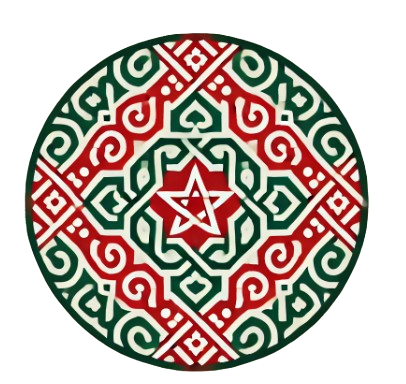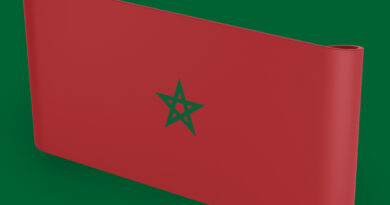Hassan II: The King Who Said “Style is the Man”
King Hassan II of Morocco (1961-1999) remains one of the most significant figures in the country’s modern history. A ruler both feared and respected, he left an indelible mark on Morocco through his vision, his firm grip on power, and his mastery of rhetoric. Among his many memorable statements, one stands out as a perfect reflection of his personality and approach to leadership: “Style is the man.” A succinct yet profound phrase, embodying the sovereign’s elegance, authority, and strategic finesse.
A Monarch with the Stature of a Statesman
The son of King Mohammed V, Hassan II was born into a dynasty rich in history and prestige. Educated in the best schools and possessing a refined classical culture, he quickly established himself as a monarch with a unique style upon ascending to the throne. Erudite, a brilliant orator, and a shrewd strategist, he wielded words with rare finesse. However, his style was not limited to eloquence—it was reflected in his entire approach to governance: a blend of pragmatism, diplomacy, and, when necessary, unyielding authority.
A Distinct Political Style
Hassan II was a leader who understood the delicate balance between monarchy and modernity. His reign was marked by significant modernization efforts as well as turbulent political periods, often referred to as the years of lead. He ruled with an iron fist in a velvet glove, embodying a regal posture where every word and gesture was meticulously calculated. His undeniable charisma, combined with a natural sense of presence, gave his style an unquestionable authority.

Deeply attached to protocol and ceremonial traditions, he ensured that his every public appearance was meticulously orchestrated, reinforcing his image as the custodian of Morocco’s historical and political continuity. However, his style was more than mere symbolism; it extended to his negotiation tactics, his ability to charm interlocutors, and his influence on the global stage.
A Man of Words and Thought
A captivating speaker, Hassan II wielded the French language with remarkable ease, seamlessly blending academic eloquence with sharp wit. Law graduate, he relished intellectual debates, often quoting literary greats and employing incisive phrases to leave a lasting impact. His famous statement, “Style is the man,” encapsulates his philosophy: he believed that how one speaks, behaves, and governs is a true reflection of one’s character.
A Legacy of Style and Leadership
Even today, Hassan II remains a point of reference in Moroccan history. His legacy extends beyond infrastructure projects and institutional reforms to encompass his governance style, diplomatic prowess, and strategic image-making. His famous phrase serves as a reminder that style is not merely about appearance but represents a vision, a force, and an identity.
Hassan II turned style into an art of leadership. For him, a ruler had to be a man of principles, strategy, and presentation. His reign—marked by a duality of strict governance and refined sophistication—perfectly embodied the maxim he so eloquently expressed: “Style is the man.”
The Fashion and Style of King Hassan II: Elegance and Sovereignty
King Hassan II of Morocco was not only a formidable ruler and a brilliant speaker but also a man of impeccable taste. His fashion choices were a testament to his refined personality and his understanding of the power of appearance. He carefully crafted his public image through his wardrobe, striking a balance between tradition and modernity, between ancestral heritage and global influence.
A Monarch with a Distinguished Presence
Hassan II understood that every public appearance was a stage where clothing played a crucial role. His presence was always commanding, characterized by a natural poise and an unmistakable air of authority. Whether in traditional Moroccan attire or a tailored European suit, he exuded a sense of discipline, elegance, and power.

The Balance Between Tradition and Modernity
The Moroccan king masterfully blended respect for national traditions with a timeless Western elegance. During official ceremonies, he often donned a djellaba, usually in white or beige, a flowing and meticulously crafted garment symbolizing both Moroccan craftsmanship and royal dignity. This attire, paired with fine leather babouches, highlighted his deep connection to Morocco’s cultural heritage and the monarchy’s spiritual legitimacy.

Yet, Hassan II was also a worldly leader who knew how to navigate the international diplomatic stage with finesse. His wardrobe reflected this duality—he frequently wore well-tailored suits, often in dark shades such as navy blue, charcoal gray, or black. These suits, crafted by top European designers, were always complemented by crisp white shirts and discreet yet sophisticated ties. His Western attire echoed the sartorial choices of other prominent statesmen of his time, reinforcing his image as a refined and cosmopolitan leader.
Attention to Detail
Hassan II was a man of precision, and his clothing reflected his meticulous nature. His suits were impeccably cut, exuding both authority and sophistication. One of his most recognizable accessories was his signature sunglasses, which added an air of mystery and reinforced his enigmatic charisma. These sunglasses were more than just a fashion statement; they were an essential part of his public persona.
Another defining element of his style was his headwear. He frequently wore the red tarbouche (fez), a symbol of royal authority, or the sédria, a lighter variation of the traditional Moroccan cap. These subtle but powerful choices contributed to his carefully curated image of a modern yet deeply rooted sovereign.
A Style That Mirrored His Reign
King Hassan II’s fashion choices were a direct reflection of his governance. He seamlessly combined continuity and evolution, tradition and innovation. Whether dressed in a humble djellaba during Friday prayers or an impeccably tailored three-piece suit at an international summit, he remained true to his belief that style was not merely about clothing—it was a statement of leadership and power.

Even today, Hassan II’s image remains iconic, forever associated with an elegance that was both deliberate and natural. His style was an extension of his rule: strategic, dignified, and unforgettable.
King Hassan II: The Orator and Master of Conviction
King Hassan II of Morocco (1961-1999) was not just a sovereign; he was a statesman of exceptional eloquence, a master of rhetoric, and one of the most persuasive figures in modern history. His speeches, carefully crafted and impeccably delivered, were more than just words—they were instruments of power, diplomacy, and governance. His ability to command an audience, whether addressing his nation, negotiating with world leaders, or engaging in intellectual discourse, made him a formidable leader whose words carried weight and influence.
A Natural Orator with Unmatched Eloquence
From an early age, Hassan II demonstrated a keen intellect and an innate ability to articulate complex ideas with clarity and conviction. His education in law, philosophy, and classical literature equipped him with the tools to master the art of persuasion. He spoke fluent Arabic and French, using both languages with remarkable precision, seamlessly blending academic depth with a natural sense of rhetoric.
Unlike many leaders who read from prepared speeches, Hassan II often spoke extemporaneously, captivating his audience with his sharp wit, controlled intonation, and authoritative presence. His words were not merely spoken; they were performed, leaving a lasting impression on those who heard them.
The Power of Persuasion in Governance
Throughout his reign, Hassan II used his oratory skills to consolidate his authority, defuse political crises, and shape public opinion. He had an exceptional ability to anticipate his audience’s concerns and address them in a way that reassured, persuaded, and, when necessary, warned. His speeches often contained a mix of wisdom, pragmatism, and sometimes veiled threats, making it clear that he was both a guardian and an enforcer of Morocco’s stability.
During times of political turbulence, such as the Years of Lead, he skillfully used his words to maintain control. Even in the face of dissent, he had a way of turning the tide of discourse in his favor, using logic, historical references, and moral authority to dismantle opposition arguments. His speeches were calculated, yet they resonated with sincerity, making him one of the most convincing figures of his era.
Diplomacy and International Influence
Hassan II was not only an orator in his own country; he was also a diplomatic strategist on the global stage. His ability to engage with world leaders, articulate Morocco’s position, and negotiate critical agreements was a testament to his intellectual agility.
His role in brokering secret meetings between Israel and Arab nations, which ultimately laid the groundwork for the Israel-Egypt peace process, is one of the clearest examples of his diplomatic brilliance. He had an unmatched ability to navigate the intricacies of Middle Eastern politics, using words as tools to bridge divides and shape geopolitical landscapes.
A Legacy of Words and Ideas
Hassan II’s speeches remain a significant part of his legacy. His ability to command language, structure arguments, and use persuasion as a means of leadership has left a lasting impact on Moroccan politics and governance. His famous phrase, “Le style, c’est l’homme” (“Style is the man”), encapsulates his philosophy: one’s way of speaking, acting, and leading is an extension of one’s character.
Even years after his passing, his words continue to be studied and remembered. They are not just echoes of the past—they are reminders of a time when leadership was as much about intellect and persuasion as it was about authority and power. King Hassan II was not merely a ruler; he was an orator, a strategist, and a leader whose words could move nations.


